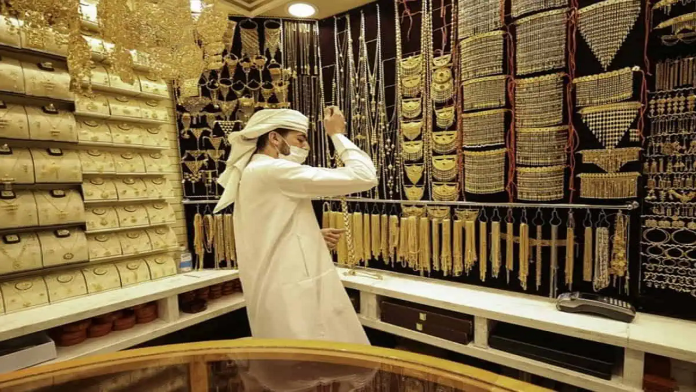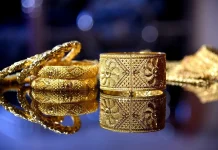India’s recent restrictions on importing precious metals like gold and silver from the UAE in unwrought, semi-manufactured, and powdered forms are set to reshape the dynamics of the bilateral gold trade by ensuring more transparency and compliance.
The move, announced as part of India’s Budget 2025, introduces new Harmonised System (HS) codes for gold dore, silver dore, and high-purity platinum, aiming to curb the misuse of tariff concessions under the India-UAE Comprehensive Economic Partnership Agreement (CEPA).
This policy shift, designed to enhance transparency and compliance, could disrupt Dubai’s gold trade, which has seen exponential growth in recent years.
The new rules target a loophole that allowed importers to label nearly pure gold — containing 99 per cent gold — as platinum alloy to exploit lower import duties under CEPA. By introducing a specific HS code for platinum with 99 per cent or higher purity, India ensures that only genuine platinum imports qualify for duty concessions. Other compositions now face restrictions, effectively closing the door on disguised gold imports. Additionally, imports of precious metals are now restricted to nominated agencies, qualified jewellers, and valid tariff rate quota (TRQ) holders under CEPA, streamlining the process and enforcing stricter oversight.
India’s gold imports from the UAE have surged in recent years, rising threefold from $3.5 billion in fiscal 2023 to $10.7 billion in fiscal 2024, according to data from India’s Ministry of Commerce and Industry. This growth occurred despite a 9.8 per cent decline in overall imports from the UAE, highlighting the significant role of precious metals in bilateral trade. Under CEPA, India allows a 1.0 per cent tariff concession on 200 metric tonnes of gold annually, reducing the duty to 14 per cent compared to the 15 per cent Most Favoured Nation (MFN) tariff. For silver, India permits a 7.0 per cent tariff concession on unlimited quantities. These concessions have made the UAE a preferred route for gold imports, despite the Middle Eastern nation not mining gold or adding substantial value to the metal.
However, experts had raised concerns about the sustainability of this trade. The Global Trade Research Initiative (GTRI) warned in 2024 that the tariff concessions under CEPA were prone to misuse, benefiting a small group of importers who profited from tariff arbitrage without passing savings to consumers. The UAE’s role as a re-exporter, importing high-purity gold bars and converting them into unwrought forms for export to India, often fails to meet CEPA’s 3.0 per cent value-addition requirement, according to bullion market analysts. This practice has fueled India’s decision to tighten regulations.
Sajith Kumar PK, CEO of IBMC Financial Professionals Group, views the restrictions as a step toward greater transparency. “India’s decision will ensure the bilateral gold trade is more structured, aligning with the Dubai Good Delivery Standard and CEPA regulations,” he said. The India International Bullion Exchange (IIBX) in Gift City, Ahmedabad, is facilitating seamless gold imports under the TRQ system, further strengthening compliance. The UAE’s recent efforts to regulate licensed gold refining activities complement India’s moves, ensuring that only adequately processed gold is exported, Kumar added.
For Dubai, a key player in the global gold market handling approximately 25 per cent of the world’s physical gold trade according to the Dubai Multi Commodities Centre (DMCC), these restrictions could pose challenges. The emirate’s gold trade relies heavily on exports to India, which accounts for a significant portion of its $75 billion annual bullion market. A reduction in India’s imports due to stricter regulations may force Dubai-based traders to seek alternative markets or adapt to India’s new compliance requirements, potentially increasing operational costs.
India’s long-term CEPA commitments, including eliminating duties on platinum within five years and on cut and polished diamonds within ten years, may continue to route significant imports through the UAE. However, the immediate impact of the restrictions will likely be a slowdown in gold and silver imports, as importers adjust to the new regulatory framework.
Analysts said while these measures aim to protect India’s economic interests and ensure fair trade practices, they underscore the delicate balance between fostering bilateral trade and curbing exploitative practices, with Dubai’s gold market caught in the crosshairs.



